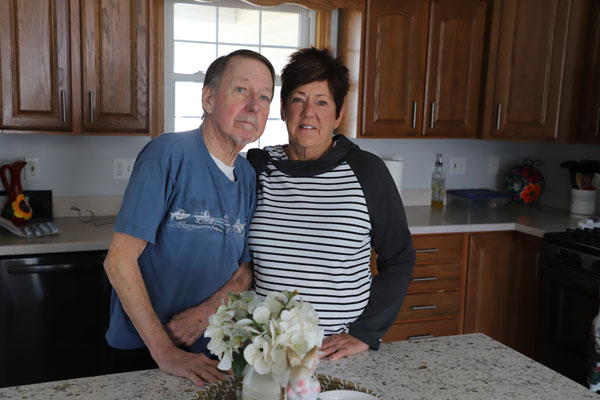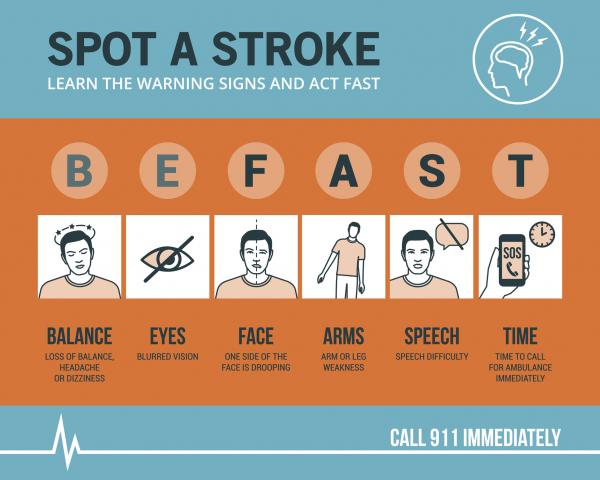On a Saturday morning, Barb and Rich Schmidt were getting ready to attend a swim meet featuring one of their grandchildren.
“Normal morning,” Rich recalls. “Showered and shaved and began combing my hair.”
They never made it to the swim meet. As Rich was getting ready, he could not grip the hair comb he was trying to use with his left hand. It kept falling to the floor.

“I knew something was up,” Rich continued. “Something wasn’t right.”
As he turned to leave the bathroom, Rich collapsed in the hallway – conscience but unable to stand.
“My whole left side was done,” he said.
Just that quickly, Rich had a stroke. Every year, more than 795,000 people in the United States have a stroke. It is a leading cause of death and serious long-term disability.
Stroke cuts off blood to the brain, killing brain cells and typically weakening one side of the body or the other, as it did to Rich. Surviving stroke requires getting medical care quickly, because brain cells don’t recover. The longer the time between symptoms beginning and medical care received, more brain cells die and more irreversible damage is done.
Rich’s wife knew just what to do. Barb, a 45-year member of the Blessing Hospital staff before retirement, spent the last five years of her career as a member of the hospital’s Stroke Team.
“I had all the classic signs and she knew it,” Rich said. “She was on the phone like – BANG – right now to 9-1-1.”
“I was scared to death,” Barb readily admitted. “As much knowledge as I had, my family had never gone through this. I did not know what to expect.”
There are two kinds of stroke: Ischemic, which is caused by a blood clot, and hemorrhagic, which is caused by sudden bleeding from a blood vessel inside the brain or in the spaces around the brain. Only 13 percent of strokes are hemorrhagic. They tend to be more severe with a more challenging recovery.
Rich had a hemorrhagic stroke. He had to relearn to walk, talk and eat. Rich spent five days in Blessing’s critical care units, three weeks in Blessing’s nationally accredited Rehabilitation Services unit and six weeks in a specialized stroke rehabilitation center.
Today, four years after that Saturday morning when the left side of his body collapsed, Rich is 69 years old and continues to do four hours of therapy each week, and walks with a cane.
His attitude and will, however, are stronger than ever.

“It’s a mindset,” he continued. “You’ve just got to keep going. That’s part of the therapy process. You can accept certain limitations, but sometimes you have to say, ‘No, I have to keep going, keep trying,’ because if you don’t, you’re stuck. I can see how people can end up that way easily.”
Having constant access to a caregiver, as Rich does with Barb, makes keeping the right mindset a bit easier.
“I’m lucky. I’ve got somebody who likes to push,” he said of his wife of 49 years. “You need that every now and then.”
Blessing is an American Heart Association and American Stroke Association certified Primary Stroke Center and recognized by U.S. News & World Report in its 2021-22 national healthcare rankings as a “High Performing Hospital” for stroke care. For more information on stroke, including how to recognize signs and symptoms quickly, click here.

